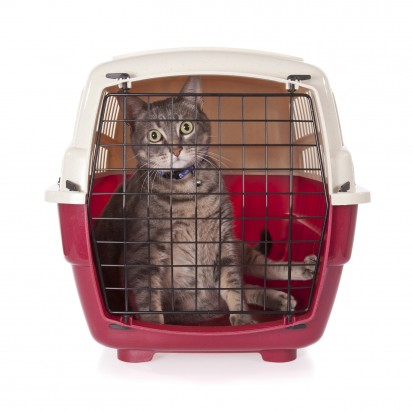
Algae are autotrophic organisms that thrive in bodies of water. Also called seaweeds, they are called autotroph because they produce complex organic compounds like proteins, fats, and carbohydrates. Like plants, they are the producers in the food chain but they do not have many of the distinct organs of plants. They are capable of producing their own food through photosynthesis and they can survive in unusual environment like snow and ice.
Some algae species are edible like many of the seaweeds and they are sources of food in many parts of the world. There are hundreds of edible species and they are found to contain vitamins and minerals. They are also being processed as fertilizers and livestock feed. One branch of aquaculture is algaculture which is dedicated in the farming of algae. In freshwater aquariums, there are quite a number of algae and they survive through the nutrients in the water. In some cases freshwater aquarium algae serve as food for aquarium inhabitants like shrimps and snails but if their growth is not controlled, they could be a threat to other aquatic life.
Commonly found in new aquarium setups are the brown algae. They also flourish in low-light aquariums where phosphate level is high while the nitrogen is low. They are a slimy and soft algae that are found in the aquarium glass, in the substrate, and even in decorations. It has been observed that brown algae go away in the presence of strong lights but may still remain in shadowy areas of the tank. In contrast, the green spot algae thrive in aquariums with strong light. They appear as green spots on aquarium plants and the tank glass. This type of freshwater aquarium algae is hard and appears if phosphate and carbon dioxide levels are low.
The hair algae and thread algae appear as strings in the water. They grow in aquarium tanks if there are excess amounts of iron. They can easily be removed by twirling a toothbrush around them. Thread algae grows on leaves of plants and normally found on leaf edges and can reach lengths of 30 cm. Hair algae grow at the base of plants and on the substrate. They have green-gray color and grow to about 4 cm. Most aquarists welcome hair algae because fish like Angels and Barbs consume them as supplements to their food. Freshwater aquarium shrimps like the caridina japonica consume the algae in the likes of the thread algae.
A kind of algae that enhance the look of a tank is the beard algae. These types of algae form carpet like covering on pieces of stones bogwood, and slow growing plant leaves. They are formed closer to the light source. They are soft and slippery and rapidly grow to a maximum of 3 cm. A constant light source and unbalanced nutrients promotes the rapid growth of the beard algae. They are common in aquariums without plants and can be very difficult to remove manually. The best method of controlling them is to introduce species of fish that would gladly consume them. Fish like the Rosy barbs, Siamese algae eaters, and Plecos would be a great help in reducing them. Before introducing them to the existing species in tank, make sure that they are compatible tank mates for the inhabitants presently in your tank. If they can not adapt to the present aquarium setup, they have little use in controlling the beard algae.
Freshwater aquarium algae in tiny patches add color and life to the aquatic ecosystem. Aside from serving as food for some aquatic life, they provide a sort of hiding place for fish fry. They are also good indicator that there is an imbalance in the system. They can show that there may be an excess of nutrients in the water. Excess nutrients may indicate that there is an overfeeding of fish and that an unhealthy plant is excreting some nutrients. They may also indicate that there a spike in certain substances that can cause harm to the fish and plants.
The growth of freshwater aquarium algae depends on the existing conditions inside the tank. There are three necessities that enable algae to thrive in an enclosed aquatic ecosystem. These necessities are water, light, and nutrients that are basic in all aquariums. Controlling these sources of life for algae is the major step in preventing them to grow and cause some damage. Light can be controlled by placing the aquarium far from the sunlight and artificial light must not be used more than eight hours per day. The light must also not be too bright and an automatic switch with a timer should be installed.
Aquarium fish eating habits are different in every species. In controlling phosphate levels that serve as food for algae, it is more practical to feed them with less than to overfeed. If fish have eaten and there are excess foods in the water, remove them immediately. Aside from removing floating wastes and excess foods in the water, changing part of the water will reduce the chances of phosphate and nitrate build up. Change at least 10 to 15% of the water once a week and scrape off any algae sticking on the glass at the same time. Testing the water from time to time is a good monitoring practice. Algae must not be given the perfect condition to grow uncontrollably
Get professional help when dealing with algae and much, much more, Read http://www.freshwateraquariumcenteronline.com/freshwater-aquarium-live-plants/ .
Visit our website and let the pro's teach you the secrets of owning an aquarium. Sign up for our FREE freshwater aquarium email mini-course today at http://www.freshwateraquariumcenteronline.com
 Getting Your Cat To Accept A Cat Carrier
Getting Your Cat
Getting Your Cat To Accept A Cat Carrier
Getting Your Cat
 The Most Common Phobias Seen In Dogs
The Most Common P
The Most Common Phobias Seen In Dogs
The Most Common P
 Health, Longevity And Care Of The Pomeranian Dog
Health, Longevity
Health, Longevity And Care Of The Pomeranian Dog
Health, Longevity
 Ten Good Supplemental Foods To Help Combat Problems In Dogs
Ten Good Suppleme
Ten Good Supplemental Foods To Help Combat Problems In Dogs
Ten Good Suppleme
 Septic Arthritis In Rabbits Explained
Septic Arthritis
Septic Arthritis In Rabbits Explained
Septic Arthritis
Copyright © 2005-2016 Pet Information All Rights Reserved
Contact us: www162date@outlook.com